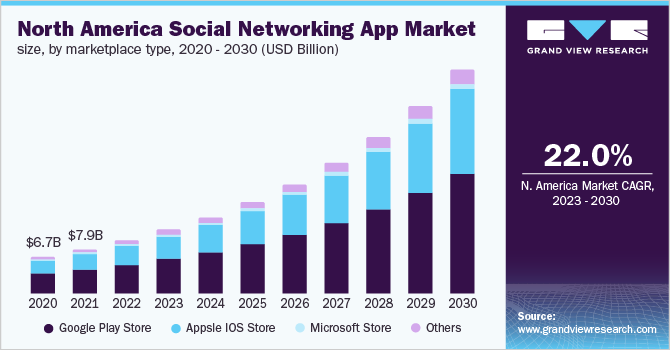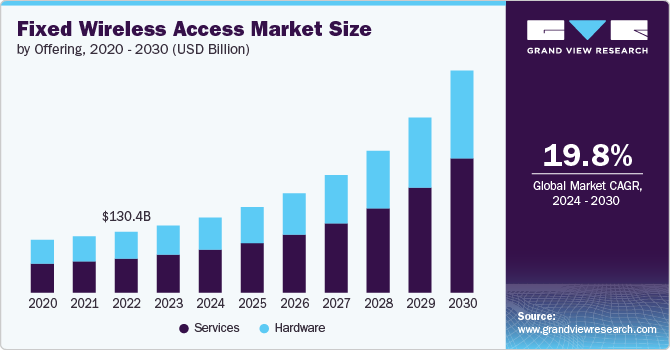Micro LED Market Size, Share, & Trends Analysis growing at a CAGR of 77.4% from 2024 to 2030

The global micro LED market size was valued at USD 623.6 million in 2023 and is projected to reach USD 25.65 billion by 2030, growing at a CAGR of 77.4% from 2024 to 2030. The increased consumption of on-demand content, ranging from streaming services to high-definition video content, needs screens that can display complex and detailed graphics, which is propelling the growth of the micro LED industry.
Key Market Trends & Insights
- The micro LED market in North America is growing at a significant CAGR of around 78%from 2024 to 2030
- The micro LED market in the U.S. is anticipated to grow at a significant CAGR of 76.7% from 2024 to 2030.
- By application, The display segment held the largest market share of over 82% in 2023.
- By display, the television segment held the largest market share of around 85% in 2023.
Market Size & Forecast
- 2023 Market Size: USD 623.6 Million
- 2030 Projected Market Size: USD 25.65 Billion
- CAGR (2024-2030): 77.4%
- North America: Largest market in 2023
Request a free sample copy or view report summary: https://www.grandviewresearch.com/industry-analysis/micro-led-market-report/request/rs1
The potential of micro LEDs to deliver high-quality images meets the changing preferences of customers involved in a variety of content consumption activities. The micro LED technology allows the production of ultra-thin and flexible displays, which is one of its distinctive positive effects.
This adaptability opens new avenues for creative design in goods such as smartphones, wearables, automobile screens, digital signage, and massive operations digital screens. Due to the small size of the LEDs, integrating micro LED displays with electronic components is a major challenge. To attain seamless integration with touchscreen cameras, sensors, and connection components, complex engineering solutions need to be implemented. This complex nature of the integration procedure adds more complexity to the entire product development issues, slowing micro LED product delivery times. Furthermore, the complex processes essential in the production of micro LED displays, such as reliable mass transportation and the utilization of specialized equipment, substantially contribute to increased production costs, which is hindering the market growth.
Micro LED screens are predicted to play an increasingly important part in wearable technology over the forecasted period. Micro LED integration into smartwatches, laptops, AR/VR glasses, and fitness trackers is expected to grow in popularity. Manufacturers are expected to overcome existing barriers, allowing them to produce micro LED displays suited for larger applications such as high-end televisions and industrial displays. Streamlining these processes can help micro LED technology become more easily accessible and economically feasible in the forecast period. The cost of micro LED displays is anticipated to fall as production processes improve and the economy of scale increases. The decline in manufacturing costs is expected to fuel market growth, rendering micro LED technology less expensive across a wide range of applications and industries.
Market Concentration & Characteristics
One of the main growth opportunities in the micro LED industry is the increasing demand for high-quality displays in various devices such as TVs, smartphones, and wearables. Micro LEDs offer better brightness, contrast, and energy efficiency compared to traditional LEDs and OLEDs. This makes them ideal for creating better visuals in next-generation screens. In addition, as production techniques improve and costs decrease, more companies are adopting micro LED technology, leading to wider use in different industries and driving market growth.






